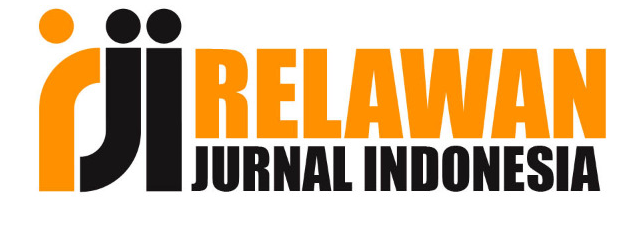Beyond Traditional Technology Acceptance: The Role of Financial Literature and Risk Awareness in Indonesian Fintech Adoption
DOI:
https://doi.org/10.61179/ejba.v19i2.783Keywords:
Fintech adoption, Technology Acceptance Model, Financial literacy, Risk awareness, IndonesiaAbstract
The rapid rise of financial technology (fintech) in Indonesia has introduced unique adoption patterns that challenge traditional technology acceptance models. This study explores key factors influencing fintech adoption among Indonesian university students by extending the Technology Acceptance Model (TAM) to include social influence, risk perceptions, financial literacy, and risk awareness. Employing a quantitative cross-sectional design and partial least squares structural equation modeling (PLS-SEM), data from 118 students were analyzed. The extended model explains 68.6% of the variance in adoption intention, with attitude acting as a key mediator linking perceived usefulness, ease of use, and behavioral intention. Perceived usefulness is the strongest predictor of attitude (? = 0.475), while attitude has the most substantial direct impact on intention (? = 0.802). Financial literacy significantly influences both perceived ease of use (? = 0.232) and attitude (? = 0.237), underlining its importance in technology adoption. Interestingly, risk awareness positively affects perceived usefulness (? = 0.266), suggesting that risk-aware individuals may better appreciate fintech's value. These findings highlight the mediating role of attitude and the domain-specific impact of financial literacy. The study offers practical insights for fintech providers and policymakers to enhance adoption through integrated financial and digital literacy initiatives tailored to collectivistic and emerging market contexts.References
Ajzen, I. (1991). The Theory of Planned Behavior. Organizational Behavior and Human Decision Processes, 50(2), 179-211. https://doi.org/10.1016/07495978(91)90020-T
Al-Saedi, K. Al-Emran, M., Ramayah, T., & Abushanab, E. (2020). Developing a General Extended UTAUT Model for M-payment Adoption. Technology in Society, 62, 101293. https://doi.org/10.1016/j.techsoc.2020.101293
Amnas, M.B., Selvam, M., Raja, M., Santhoshkumar, S., & Parayitam, S. (2023). Understanding the Determinants of FinTech Adoption: Integrating UTAUT2 with Trust Theoritic Model. Journal of Risk and Financial Management, 16(12), 505. https://doi.org/10.103390/jrfm16120505
Amnas, M.B., Selvam, M., & Parayitam, S. (2024). Fintech and Financial Inclusion: Exploring the Mediating Role of Digital Financial Literacy and the Moderating Influence of Perceived Regulatory. Journal of Risk and Financial Management, 17(3), 108. https://doi.org/10.103390/jrfm17030108
Appiah, T., & Agblewornu, V.V. (2025). The Interplay of Perceived Benefit, Perceived Risk, and Trust in Fintech Adoption: Insights from Sub-Saharan Africa. Heliyon 11(2), e41992.https://doi.org/10.1016/j.heliyon.2025.e41992
Baabdullah, A., Alalwan, A., Slade, E., Rahman, R., & Khatatneh, K. (2021). SMEs and Artificial Intellegence (AI): Antecedents and Consequences of AI-based B2B Practices. Industrial Marketing Management, 98, 255-270. https://doi.org/10.1016/j.indmarman.2021.09.003
Baistaman, J., Awang, Z., Afthanorhan, A., & Zulkifli Abdul Rahim, M. (2020). Developing and Validating the Measurement Model for Financial Literacy Construct using Confirmatory Factor Analysis. Humanities & Social Sciences Reviews, 8(2), 413-422.https://doi.org/10.18510/hssr.2020.8247
Coffie, C.P.K., Hongjiang, Z., Mensah, I.A., Kiconco, R. & Simon, A.E.O. (2021). Determinants of FinTech Payment Services Diffusion by SMEs in Sub-Saharan Africa: Evidence from Ghana. Information Technology for Development, 27(3), 539-560. https://doi.org/10.1080/02681102.2020.1840324
Creswell, J.W., & Creswell, J.D. (2018). Research Design: Qualitative, Quantitative, and Mixed Methods Approaches (5th Ed.). Sage Publications.
Daragmeh, A., Lentner, C., & Sagi, J. (2021). FinTech Payments in the Era of COVID-19: Factors Influencing Behavioral Intentions of “Generation X’ in Hungary to Use Mobile Payment. Journal of Behavioral and Experimental Finance, 32, 100574. https://doi.org/10.1016/j.jbef.2021.100574
Daragmeh, A., Sagi, J., & Zeman, Z. (2021). Continuous intention to Use e-Wallet in the Context of the COVID-19 pandemic: Integrating the Health Belief Model (HBM) and Technology Continuous Theory (TCT). Journal of Open Innovation: Technology, Market, and Complexity, 7(2), 132. https://doi.org/10.3390/joitmc7020132
Davis, F.D. (1998). Perceived Usefulness, Perceived Ease of Use, and User Acceptance of Information Technology. MIS Quarterly, 13(3), 319-340. https://doi.org/10.2307/249008
Fan, L., & Henager, R. (2022). A Structural Determinants Framework for Financial Well-Being. Journal of Family and Economic Issues, 43(2). 415-428.https://doi.org/10.1007/s10834-021-09798-w
Guo, w., & Peng, Q. (2024). Bridging the Digital Divide: Unraveling the Determinants of FinTech Adoption in Rural Communities. SAGE Open, 14(1), 1-17. https://doi.org/10.1177/21582440241227770
Hair, J.F., Risher, J.J., Sarstedt, M., & Ringle, C.M. (2019). When to Use and How to Report the aaresults of PLS-SEM. European Business Review, 31(2), 2-24. https://doi.org/10.1108/EBR-11-2018-0203
Islam, M., Tamanna, A.K., & Islam, S. (2024). The Path to Cashless Transaction: A Study of User Intention and Attitudes Towards Quick Response Mobile Payments. Heliyon, 10(15):e35302.https://doi.org/10.1016/j.heliyon.2024.e35302
Kelly, A.E., & Pallaniappan, S. (2023). Using A Technology Acceptance Model to Determine Factors Influencing Continued Usage of Mobile Money Service Transactions in Ghana. Journal of Innovation and Entrepreneurship, 12 (34) https://doi.org/10.1186/s13731-023-00301-3
Khan, F., Siddiqui, M.A. & Imtiaz, S. (2022). Role of Financial Literacy in Achieving Financial Inclusion: A Review, Synthesis and Research Agenda. Cogent Business & Management, 9(1) https://doi.org/10.1080/23311975.2022.2034236
Li, C., Khaliq, N., Chivone, L., Khaliq, U., & Olah, J. (2023). Consumer’s Perception of Risk Facets Associated with FinTech Use: Evidence from Pakistan. SAGE Open, 13(4). https://doi.org/10.1177/21582440231200199
Liebana-Cabanillas, F., Singh, N., Kalinic, Z., & Carvajal-Trujillo, E. (2021). Examining the Determinants of Continuance Intention to Use Mobile Payment Systems: An Empirical Study. Technological Forecasting and Social Change, 166, 120645. https://doi.org/10.1016/j.techfore.2021.120645
Lusardi, A., & Mitchell, O.S. (2021). The Importance of Financial Literacy: Opening A New Field. Journal of Economic Perspectives, 35(4), 137-160. https://doi.org/10.1257/jep.35.4.137
Lusardi, A., & Streeter, J.L. (2023). Financial Literacy and Financial Well-Being: Evidence from the US. Journal of Financial Literacy and Wellbeing, 1(2):1-30. https://doi.org/10.1017/flw.2023.13
Panos, G.A., Karkkainen, T., & Atkinson, A. (2020). Financial Literacy and Attitudes to Cryptocurrencies. Working Papers in Responsible Banking & Finance WP No 20-002.https://dx.doi.org/102139/ssrn.3482083
Pizzi, S., Corbo, L., & Caputo, A. (2021). Fintech and SMEs Sustainable Business Models: Refelctions and Considerations for A Circular Economy. Journal of Cleaner Production, 281, 125217. https://doi.org/10.1016/j.jclepro.2020.125217
Raza, S.A., Umer, A., Qureshi, M.A., & Dahri, A.S. (2020). Internet Banking Service Quality, e-Customer Satisfaction and Loyalty: The Modified e-SERVQUAL Model. The TQM Journal, 32(6), 1443-1466. https://doi.org/10.1108/TQM-02-2020-0019
Senyo, P.K., & Osabutey, E.L. (2020). Unearthing Antecedents to Financial Inclusion Through FinTech Innovations. Technovation, 98, 102155. https://doi.org/10.1016/j.technovation.2020.102155lication
Singh, R., Rafat, A., & Srivastava, S. (2024). Payment FinTech Application Adoption in Low-income Groups: How Financial Literacy Moderates Influencing Factors? Journal of Science and Technology Policy Management. https://doi.org/10.1108/JSTPM-12-2023-0240
Venkatesh, V., & Davis, F.D. (2000). A Theoritical Extension of The Technology Acceptance Model: Four Longitudinal Studies. Management Sciences 46(2), 186-204. https://doi.org/10.1287/mnsc.46.2.186.11926
Venkatesh, V., Morris, M.G., Davis, G.B. & Davis, F.D. (2003). User Acceptance of Information Technology: Toward a Unified View. MIS Quarterly, 27(3), 425-478. https://doi.org/10.2307/30036540
Venkatesh, V., Thong, J.Y., & Xu, X. (2012). Consumer Acceptance and Use of Information Technology: Extending the Unified Theory of Acceptance and Use of Technology. MIS Quarterly, 36(1), 157-178. https://doi.org/10.2307/41410412
Venkatesh, V., Thong, J.Y., & Xu, X. (2016). Unified Theory of Acceptance and Use of Technology: A Synthesis and The Road Ahead. Journal of the Association for Information System, 17(5), 328-376. https://doi.org/10.17705/1jais.00428
Weber, E.U., Blais, A.R., & Betz, N.E. (2002). A Domain-specific Risk-attitude Scale: Measuring Risk Perceptions and Risk Behaviors. Journal of Behavioral Decision Making, 15(4), 263-290. https://doi.org/10.1002/bdm.414
Zhang, W., Mas’od, A., & Sulaiman, Z. (2022). Moderating Effect of Collectivism on Chinese Consumer’s Intention to Adopt Electric Vehivles-An Adoption of VBN Network. Sustainability 14(19), 12398. https://doi.org/10.3390/su141912398
Downloads
Published
How to Cite
Issue
Section
License
Copyright (c) 2025 Yahya Agung Kuntadi

This work is licensed under a Creative Commons Attribution 4.0 International License.















